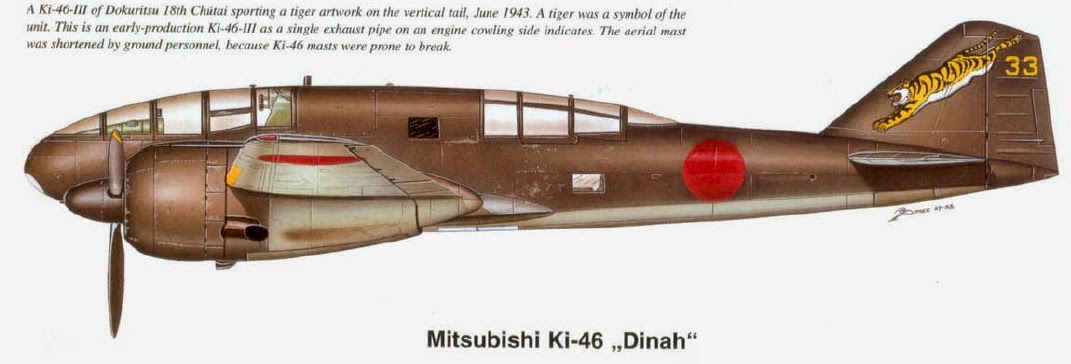Tuesday, March 3, 2015
Mitsubishi Ki 46 Profiles
The beautiful Ki 46 was the among the most capable reconnaissance aircraft of World War II. It performed critical intelligence work prior to the outbreak of hostilities by mapping invasion routes and Allied defenses.
Commencing in 1937, the Japanese army employed the Mitsubishi Ki 15 in China for reconnaissance purposes. This single-engine craft did extremely useful photographic work, although war planners realized a more modern airplane would be needed for a war with Western powers. Therefore, that same year they authorized Mitsubishi to commence research on a new twin-engine replacement for the Ki 15, with speed, altitude, and range taking precedence over all other considerations. A design team headed by Tomio Kubo then originated a prototype that first flew in November 1939. This new machine, the Ki 46, was startlingly beautiful to behold. It was a low-wing, all-metal affair with extremely rakish lines, a sharply pointed nose, and cleanly cowled engines. Test flights revealed it fell about 10 percent short of required performance, but it was still faster than any Japanese fighter in service. The following year more powerful motors were installed, and the Ki 46 easily reached 35,000 feet at 350 miles per hour, with endurance of seven hours. When the Ki 46 entered production in 1941, it was the most outstanding reconnaissance craft in the world. During World War II it received the Allied designation Dinah.
Prior to the Pacific war, the Dinah flew clandestine intelligence missions throughout Southeast Asia and the Pacific, carefully photographing Allied installations and the best invasion routes to reach them. It continued this work well into 1942, being so fast and high-flying that interception was virtually impossible. Eventually, improved Allied fighters began to take a toll on the earlier machines, so a new variant, the Ki 46 III, was introduced. It featured a front canopy that was completely fared into the fuselage. This model flew so high and fast that a special bomber-interceptor version was introduced late in 1944. Dinahs continued excellent reconnaissance work up through the end of hostilities. It was a truly outstanding aircraft for its time.
Subscribe to:
Post Comments (Atom)


No comments:
Post a Comment